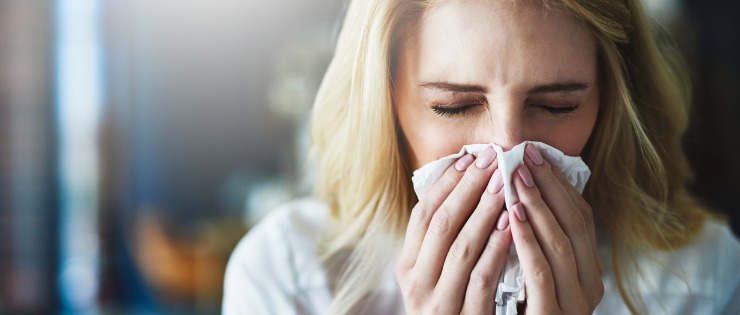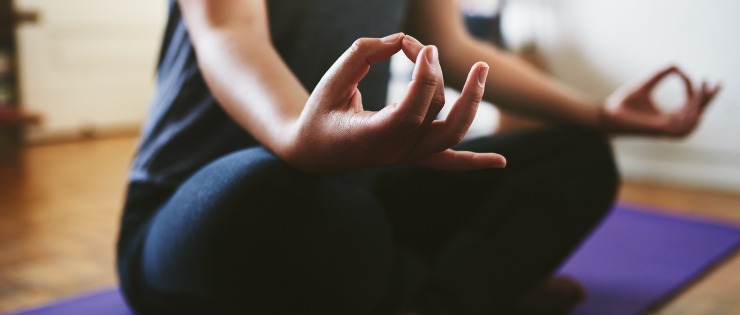
Headaches are the most common form of pain, but it doesn’t make them any easier to deal with. They are the main reason for days off work and school and visits to the doctor.
The World health organisation (WHO) estimates 47% of people experience at least one headache per year. Headache disorders collectively are the third highest cause worldwide of years lost due to disability (YLD). Headaches cause personal suffering, impaired quality of life and high financial costs. Recurring headaches predispose sufferers to other illnesses and headaches can occur secondarily to a list of other health conditions.
Types of Headaches
There are more than 150 types of primary and secondary headaches, but the most common types include:
Primary headaches
The four main types of primary headaches include vascular, muscle contraction (tension), traction, and inflammatory.
Vascular Headaches
The most common type of vascular headache is migraine which are severe headaches occurring on one or both sides of the head. Migraines can also cause an upset stomach, sensitivity to light and sound, tingling or numbness. The symptoms can last for hours or days. More women than men suffer from migraine headaches, and women often experience more severe and longer-lasting symptoms. Migraines often run in families.
Migraines usually start in childhood, adolescence or early adulthood, but the greatest number of people who suffer migraines are aged between 35 and 45 years. Migraines can be triggered by a change in hormones so some women report having fewer migraines after menopause.
The next most common vascular headache is toxic headaches which are caused by fever or substances. A substance may be an environmental poison such as fumes or chemicals. Substances in food or alcohol may also be to blame. It’s also possible that the toxic source is internal, usually from an organ responsible for eliminating waste such as the kidney, liver or bowel. When the organ doesn’t work efficiently, waste builds up in the body, causing a headache.
Cluster headaches are not as common, affecting 1-2 people in every 1,000 causing severe pain in bursts of 15 minutes to three hours. The pain is usually located around one eye or side of the temple. A sufferer may experience one headache per day or up to eight per day with the cluster lasting four to 12 weeks per year.
Muscle Contraction Headaches
Muscle contraction headaches relate to muscles in the head tightening which causes pain. The muscle contraction may be caused by stress, a missed meal, dehydration, fatigue, eye strain, or poor posture. These headaches usually only cause mild to moderate pain and resolve fairly quickly.

Traction Headaches
Traction headaches are caused by intracranial mass lesions such as metastatic tumors, abscess, or hematoma. Also, diseases of the ocular, aural, nasal, and sinusal or dental structures can produce traction headaches. Temporomandibular joint (TMJ) disorders can cause headaches as well as jaw and neck pain.
Inflammatory Headaches
Inflammatory headaches are symptoms of other health disorders. They can be as minor as a sinus infection and as major as a life threatening stroke. Inflammation headaches act as a warning sign for serious health conditions including diseases of the sinuses, spine, neck, ears, and teeth and require further medical attention.
Secondary Headaches
Secondary headaches are caused by underlying conditions, such as head trauma, stroke, or viral and bacterial infection and account for 10% of headaches. These headaches are a symptom of a disease or condition that activates pain sensitive nerves in the head.
According to the International Classification of Headache Disorders 3rd edition, there are several secondary headaches including:
Headache from trauma or injury to head or neck
Headache from cranial or cervical vascular disorder
Headache attributed to non-vascular intracranial disorder
Headache attributed to substance or substance withdrawal
Headache attributed to infection
Headache attributed to homeostasis
Headache attributed to a disorder related to face, neck or cervical structure
Headache attributed to psychiatric disorder
Causes of Headaches
There’s a wide range of common causes of headache. Some people know what causes their headaches while others don’t. If you’re unsure of the reason for your headaches, try keeping a journal and record what you ate, what you were doing before the headache began and how long the headache lasted. This information may help determine what the trigger/s are.
Common headache causes include:
Stress and anxiety
Excessive noise
Changes in hormones
Brightness from electronic devices
Overexertion
Poor sleep
Change in eating patterns
Medications and their overuse
Poor posture
Heat and dehydration
For some people, when they have a headache, they immediately know what the cause is - hormonal, caffeine or alcohol withdrawal, exertion, hypertension, post-traumatic, sinus infection, cold or flu, or allergies.

Headache Symptoms
The symptoms of a headache can be different from person to person. Each headache can bring with it different symptoms in a person. Here are some of the most common headache (and migraine) symptoms people experience.
Dull ache
Tightness or pressure across the forehead
Tender neck, scalp or shoulder muscles
Deep, throbbing pain
Sharp, stabbing, shooting or piercing pain
Vomiting and nausea
Sensitivity to light or sound
Trouble falling and staying asleep
Muscle aches
Difficulty concentrating
Fatigue
When the Headache is a Symptom
Headaches can be a sign of a more serious disorder. Urgent medical advice should be sought when a headache is accompanied by other symptoms such as:
Stiff neck
High fever
Convulsion, pain in the eye or ear
Loss of consciousness
Speech difficulties
Sudden change in vision
Change in mental status ie confusion, delusion, hallucinations
When a person complains of a sudden, severe headache, they should also seek medical attention.
Preventing Headaches
The prevalence of primary headaches can be reduced by knowing your headache triggers and avoiding them where possible and by:
Getting enough sleep
Drinking plenty of water and limiting alcohol, caffeine, and sugar
Regular exercise
Physiotherapy for a trauma or injury
Using relaxation techniques and reducing stress levels
Taking regular breaks from looking at electronic devices
Adopting good posture when sitting for long periods
Treatment of Headaches
Most people suffering from a headache treat the pain or take an over the counter pain killer. If you suffer from a headache three or more times per month, you should consider treatment.
There’s a range of treatment methods used on headaches, and often sufferers try various treatment methods until they find one that works for them. Popular treatments for headache and migraine include drug therapy, exercise, stress reduction, biofeedback training, and elimination of some foods from the diet.

Drug Therapy
For the majority of cases, the pain from muscle contraction headaches can be relieved with over the counter analgesic medications, such as paracetamol, ibuprofen or aspirin. All medications should be taken as prescribed to reduce the risk of rebound headaches caused by medication overuse.
For people who suffer from migraines, their doctor may prescribe preventative medication to decrease the occurrence of migraines and relieve some symptoms. The medications may include blood pressure tablets, anti-seizure medications, botox and antidepressants.
Oxygen therapy or local anaesthetic may be used to treat cluster headaches.
For sufferers of rare types of headaches, intravenous lidocaine, oral or intravenous corticosteroids or surgery may be required to provide relief.
Homeopathic Remedies
Some people have had good results with homeopathic or alternative forms of treatment. Homeopathic medicine for headaches include:
Herbal remedies (butterbur and feverfew)
Supplements
Relaxation techniques (yoga, meditation)
Biofeedback (relax muscles and reduce stress for fewer, less severe headaches)
Acupuncture

Lifestyle Changes
Some people make a link to their headaches that can be overcome by a lifestyle change. The following lifestyle changes have been reported to help with avoiding headaches:
Regular exercise
Change to diet
Improved sleep hygiene
Relaxation techniques
Some headache triggers are unavoidable, such as seasonal allergies, the weather, sinus infections, but our diet is the one area we have control over. Several foods and additives have been identified as common triggers and are included on the avoidance list. Avoid foods that contain these additives: tyramine, aspartame (artificial sweeteners) sulphites, and monosodium glutamate (MSG). Some people choose not to eliminate foods but instead reduce the load of the chemicals in their system to improve the frequency or eliminate their headaches.

Relaxation techniques can be used to prevent as well as treat headaches. Stress is a major trigger for headaches, so people find yoga, meditation, taichi or a massage can prevent a headache. If you have already succumbed to the headache you can try reducing the severity and length by massaging your scalp, taking deep breaths, and stretching.
Improved Sleep
Too little or too much sleep or poor quality sleep can trigger headaches and migraines. Many people who suffer from regular headaches or migraines also suffer from sleep problems such as restless leg syndrome, insomnia, obstructive sleep apnea and snoring. By treating the sleep problem, they may also reduce the number of headaches they suffer. You can try to improve your sleep by following these simple tips:
Go to bed and get up at the same time each night
Aim to get 7 to 8 hours of sleep per night
Make sure the room is dark and the temperature is comfortable
Avoid caffeine, alcohol and nicotine
Turn off electronic devices at least half an hour before bed
Exercise
Exercise can provide multiple benefits. Regular exercise can reduce stress/tension and improve sleep which are two main triggers of headaches. If you already have a headache, some light exercise can cause the body to release endorphins which act as a natural painkiller. Exercise during the day rather than before bed to ensure it doesn’t cause any problems falling asleep.
Getting Medical Advice
You should see a doctor if regular headaches interfere with your daily activities. If you experience 15 headaches in a month for a period of three months, your headaches are considered chronic, and you should see a doctor. Seek immediate medical attention if the headache is, accompanied with a stiff neck, high fever, convulsion, loss of consciousness, speech difficulties, eye or ear pain or sudden change in vision and the combination can signal a life threatening emergency.